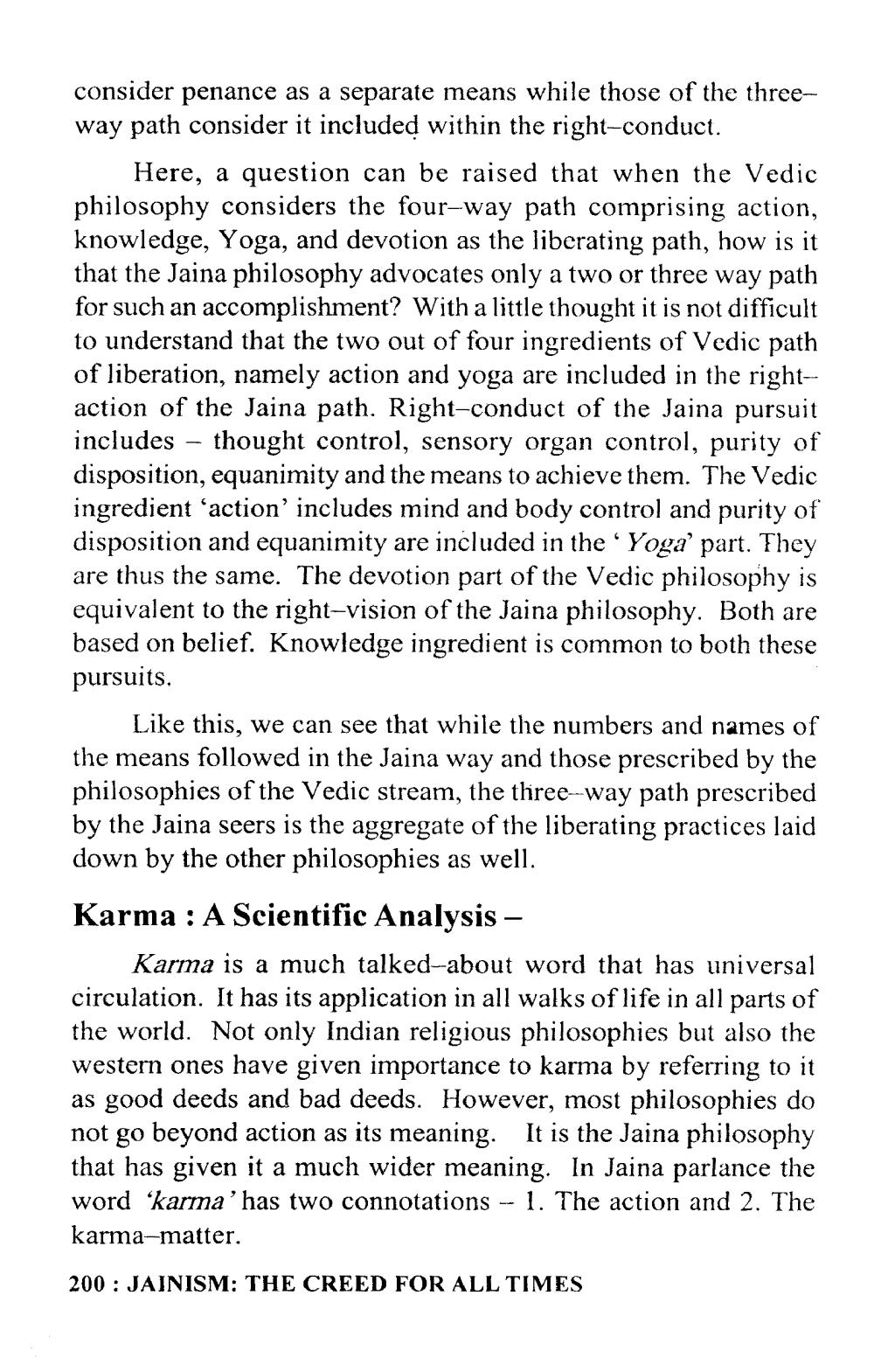________________
consider penance as a separate means while those of the threeway path consider it included within the right-conduct.
Here, a question can be raised that when the Vedic philosophy considers the four-way path comprising action, knowledge, Yoga, and devotion as the liberating path, how is it that the Jaina philosophy advocates only a two or three way path for such an accomplishment? With a little thought it is not difficult to understand that the two out of four ingredients of Vedic path of liberation, namely action and yoga are included in the rightaction of the Jaina path. Right-conduct of the Jaina pursuit includes – thought control, sensory organ control, purity of disposition, equanimity and the means to achieve them. The Vedic ingredient 'action' includes mind and body control and purity of disposition and equanimity are included in the 'Yoga part. They are thus the same. The devotion part of the Vedic philosophy is equivalent to the right-vision of the Jaina philosophy. Both are based on belief. Knowledge ingredient is common to both these pursuits.
Like this, we can see that while the numbers and names of the means followed in the Jaina way and those prescribed by the philosophies of the Vedic stream, the three-way path prescribed by the Jaina seers is the aggregate of the liberating practices laid down by the other philosophies as well. Karma : A Scientific Analysis –
Karma is a much talked-about word that has universal circulation. It has its application in all walks of life in all parts of the world. Not only Indian religious philosophies but also the western ones have given importance to karma by referring to it as good deeds and bad deeds. However, most philosophies do not go beyond action as its meaning. It is the Jaina philosophy that has given it a much wider meaning. In Jaina parlance the word ‘karma’has two connotations - 1. The action and 2. The karma-matter.
200 : JAINISM: THE CREED FOR ALL TIMES




